Wednesday, December 17, 2014
Our start today was been delayed as a result of fuel problems – pricing, delivery, government controls and many issues at play.
Our hosts, REST is concerned for us and of course we did not want to run out of fuel when we are many miles from any village.
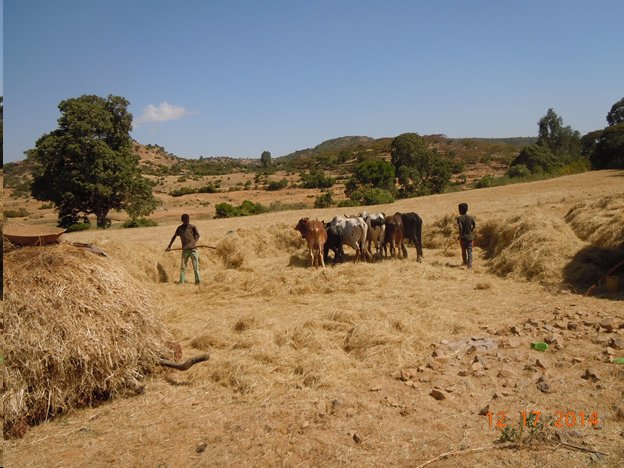
Everywhere on this trip as we spend most of our time in the rural country side I see the farmers working very hard. It is harvest season for the small grains, wheat, barley and teff(a small grain) used in the Ethiopians basic bread – injera. It is used between their thumb and two fingers as a fork to pick up their food. Here this farmer is using cattle to walk in a circle knocking the seeds off. The fork is to constantly lift to keep lose and determine when to stop the cattle walking and remove the straw and clean the seed. All of this is their combine. Wheat and barley are done the same way. The fork used by the farmed is an olive branch with a fork in it to form a two tine fork.
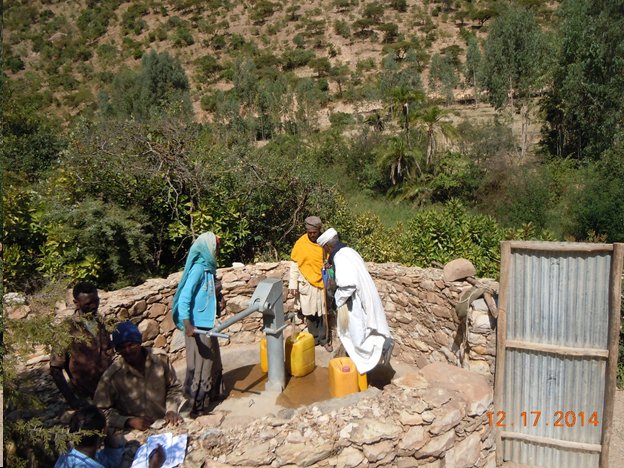
At our first well stop today we were near a monastery and the Priest in white and a monk in yellow soon joined us. Both spoke of their thankfulness for the community and for themselves as they are able to walk down the hill to now have wonderful water. They both advised that the polluted water in the stream below was filled with parasites and animal waste.
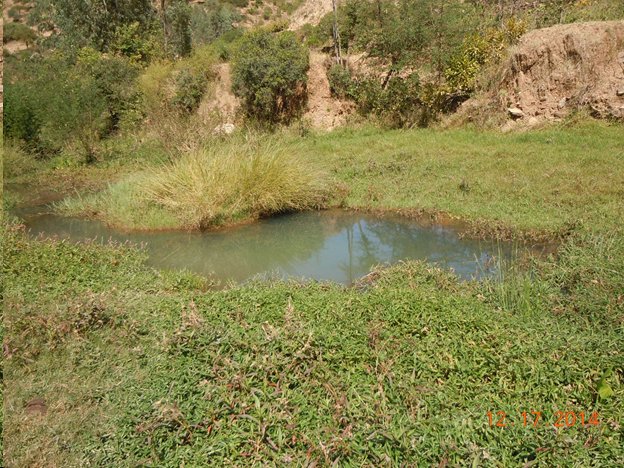
Part of the stream. This well was funded by Ethiopian Missionaries in memory of Bob Avers.
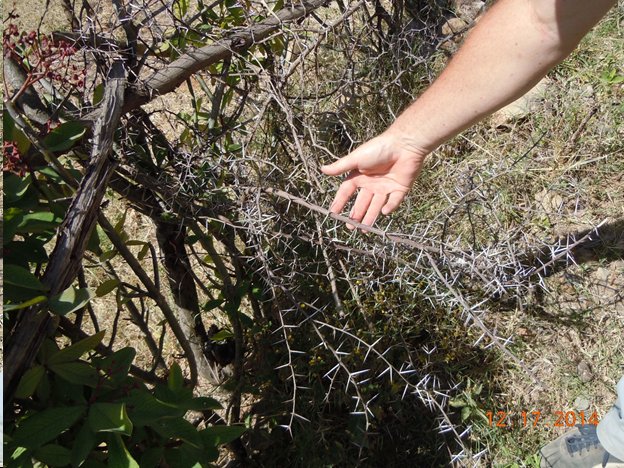
As we were leaving this site Mike and I looked at this thorn fence and commented on the crown of thorns and how it had to inflict pain.
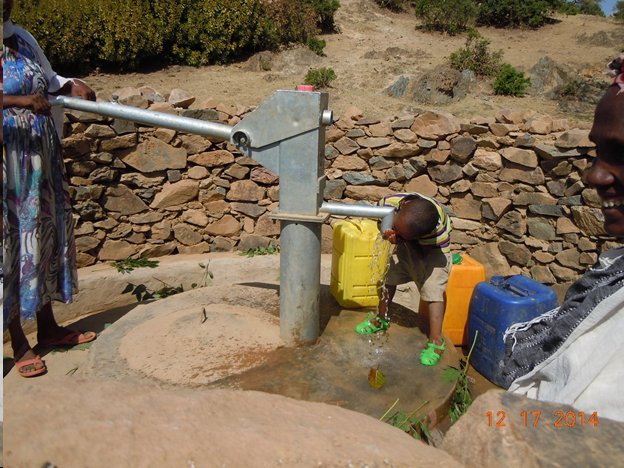
Appreciation for disease free fresh water is shown in many ways and this young boy not only enjoyed it at the source – his smile when he looked up said it all.
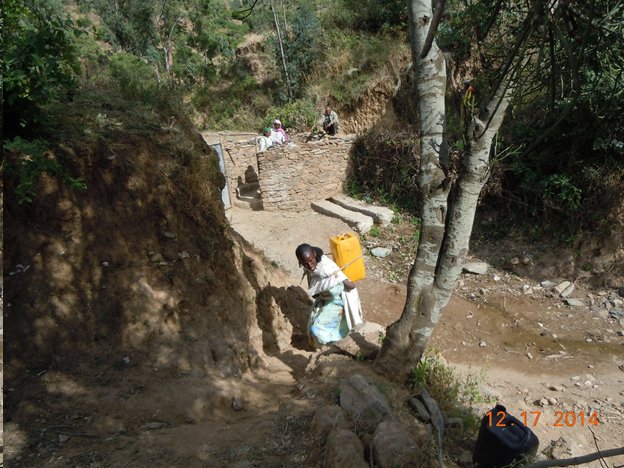
With the well in the background this lady is carrying this 45 – 50 pound jerry can up a steep bank like it is no effort. I walked up the bank and it had no steps, rocks and loose soil. This well is funded by Concordia University students, faculty and friends. Concordia has done – as I recall eight wells. A real blessing.
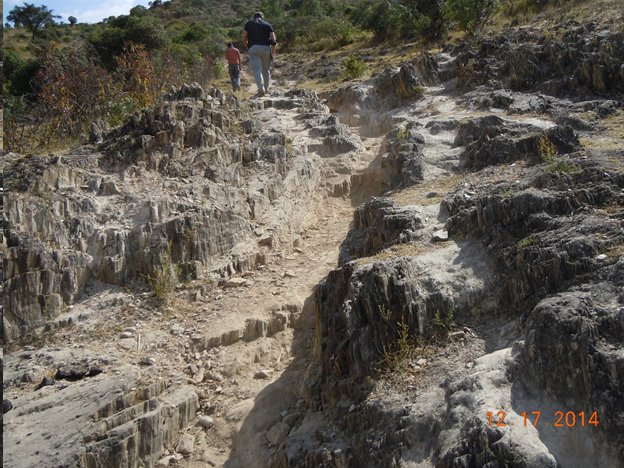
We walked over some pretty rough terrain to arrive at this well – this was on our way out. We walked over a mile each way after we left the 4WD.
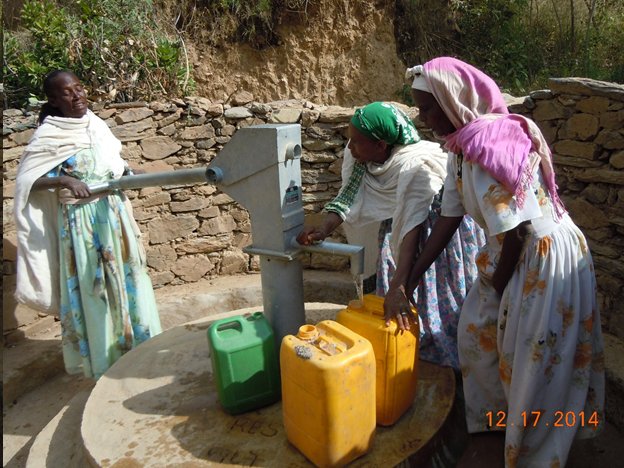
This well replaces a well that was not functional as it went to the hard pan. This well is constructed in such a way that once they arrived at the hard pan – many units of dynamite was used to go through the hard pan and another 15 or more feet into the aquifer to make it a sustainable source of clean pure water. This well serves 40 plus households or about 200 beneficiaries.
Tomorrow AM we are scheduled for several more well visits and then to the airport for an afternoon flight and here it will be Thursday, December 18 with arrival in Austin scheduled of about 3PM on Friday, December 19.
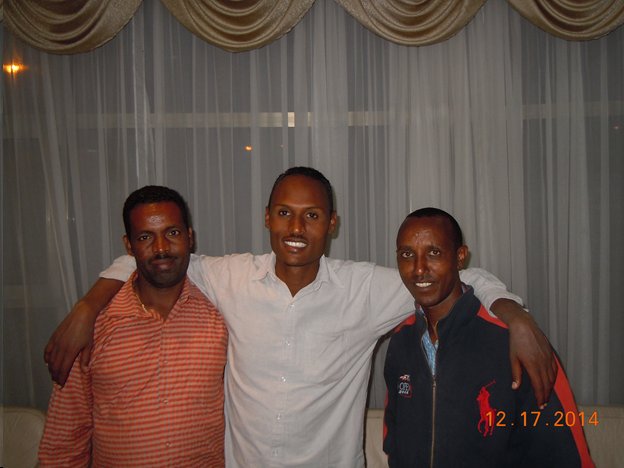
We had a thank you dinner and review tonight with our hosts from Relief Society of Tigray (REST). They have been wonderful. On the left is Whibeslassie Tesfasliassie, well division head, center (the best driver I have ever had on my trips to Africa) Tamrat Seyoum and right Gebremariam Seyoum Sr Program Monitoring.
More to follow tomorrow. Not sure when it will be sent. Also I am hopeful of some summary of this extensive trip to Uganda, Tanzania and Ethiopia. Some may be done on the airplane as sleep is hard to come by on the plane.
-Ed Scharlau
Wednesday, December 17, 2014
Our start today was been delayed as a result of fuel problems – pricing, delivery, government controls and many issues at play.
Our hosts, REST is concerned for us and of course we did not want to run out of fuel when we are many miles from any village.

Everywhere on this trip as we spend most of our time in the rural country side I see the farmers working very hard. It is harvest season for the small grains, wheat, barley and teff(a small grain) used in the Ethiopians basic bread – injera. It is used between their thumb and two fingers as a fork to pick up their food. Here this farmer is using cattle to walk in a circle knocking the seeds off. The fork is to constantly lift to keep lose and determine when to stop the cattle walking and remove the straw and clean the seed. All of this is their combine. Wheat and barley are done the same way. The fork used by the farmed is an olive branch with a fork in it to form a two tine fork.

At our first well stop today we were near a monastery and the Priest in white and a monk in yellow soon joined us. Both spoke of their thankfulness for the community and for themselves as they are able to walk down the hill to now have wonderful water. They both advised that the polluted water in the stream below was filled with parasites and animal waste.

Part of the stream. This well was funded by Ethiopian Missionaries in memory of Bob Avers.

As we were leaving this site Mike and I looked at this thorn fence and commented on the crown of thorns and how it had to inflict pain.

Appreciation for disease free fresh water is shown in many ways and this young boy not only enjoyed it at the source – his smile when he looked up said it all.

With the well in the background this lady is carrying this 45 – 50 pound jerry can up a steep bank like it is no effort. I walked up the bank and it had no steps, rocks and loose soil. This well is funded by Concordia University students, faculty and friends. Concordia has done – as I recall eight wells. A real blessing.

We walked over some pretty rough terrain to arrive at this well – this was on our way out. We walked over a mile each way after we left the 4WD.

This well replaces a well that was not functional as it went to the hard pan. This well is constructed in such a way that once they arrived at the hard pan – many units of dynamite was used to go through the hard pan and another 15 or more feet into the aquifer to make it a sustainable source of clean pure water. This well serves 40 plus households or about 200 beneficiaries.
Tomorrow AM we are scheduled for several more well visits and then to the airport for an afternoon flight and here it will be Thursday, December 18 with arrival in Austin scheduled of about 3PM on Friday, December 19.

We had a thank you dinner and review tonight with our hosts from Relief Society of Tigray (REST). They have been wonderful. On the left is Whibeslassie Tesfasliassie, well division head, center (the best driver I have ever had on my trips to Africa) Tamrat Seyoum and right Gebremariam Seyoum Sr Program Monitoring.
More to follow tomorrow. Not sure when it will be sent. Also I am hopeful of some summary of this extensive trip to Uganda, Tanzania and Ethiopia. Some may be done on the airplane as sleep is hard to come by on the plane.
-Ed Scharlau

About The Author: Water to Thrive
More posts by Water to Thrive